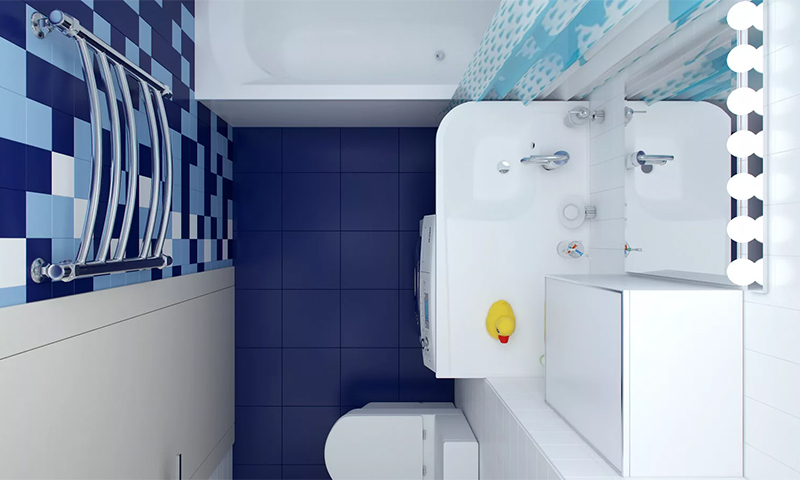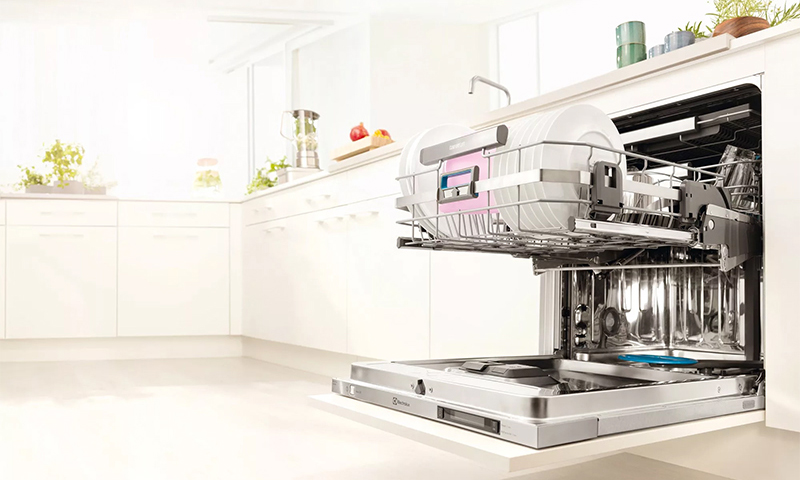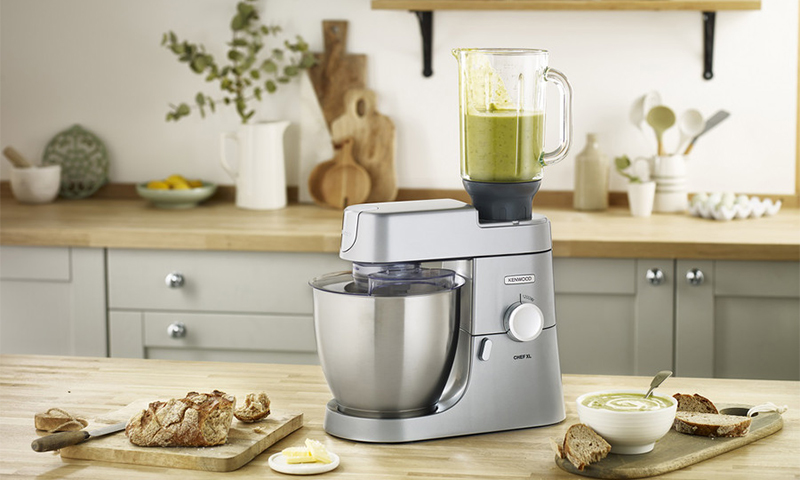Even 25 years ago, a dishwasher, like a washing machine, was considered an absolute wonder and a luxury item for most families. Today the washing machine has won a place in the bathrooms, but according to statistics, only 5% of our compatriots use the dishwasher. Many housewives persistently continue to consider it an expensive, uneconomical and inefficient unit and firmly believe that no machine will wash the dishes as you can wash it with your hands. In fact, a dishwasher saves not only water and electricity - it saves your time so that you use it for more enjoyable activities and communication with your relatives. As for the quality of washing - you can hardly ever venture to wash the plates before the squeak in boiling water - and the dishwasher will cope with this work flawlessly.
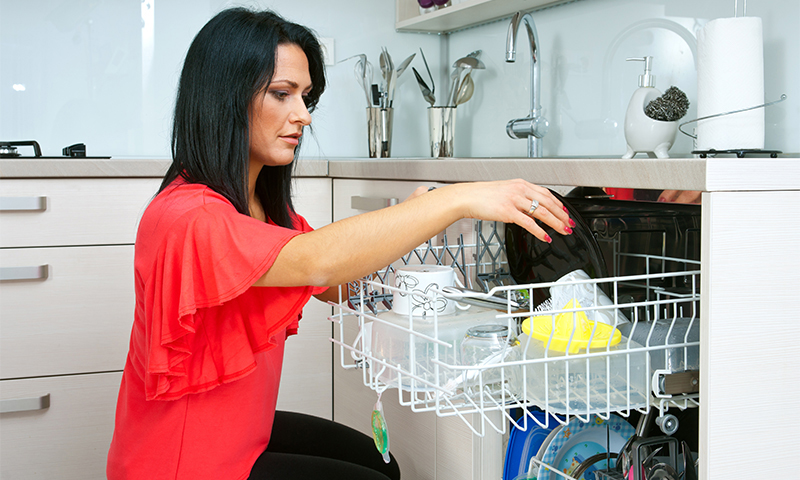
Content:
The best manufacturers of dishwashers - which company to choose
Choosing a dishwasher among the huge variety of models on the Russian market, it is better to give preference to reputable manufacturers. They produce functional and high-quality equipment in different price segments, so that the purchase will not be very very heavy for the family budget.
The largest selection of PM models with an optimal price-performance ratio is offered by the following companies:
- Bosch;
- Siemens;
- Beko;
- Hotpoint-Ariston.
You can learn more about their most successful models in ranking of the best dishwashers. But before making a decision in favor of a dishwasher, let's determine what kind of equipment your family needs.
The principle of operation and the device dishwasher

A dishwasher is a household appliance in which the process of washing and drying dishes is fully automated and takes place in a single closed chamber (tank). The device of all PMs is approximately the same and does not differ much even from different manufacturers, since nobody has yet invented anything fundamentally new in this area.
The main elements of dishwashers:
1. Sealed stainless steel case, equipped with thermal and noise insulation.
2. The electric motor is the heart of the machine, responsible for the operation of all internal components.
3. Circulation pump - supplies water from a connected pipeline to the spray arm. Together with it a drainage pump works, which pumps out the dirty water flowing from the plates.
4. Electric heaters - heat the water (and in some models, the air for drying) to the desired temperature.
All this is hidden between the walls of the PM. Inside the chamber there are only a sprinkler spinner, a hole for draining water and mesh baskets for unfolding dishes. Outside, a touch or push-button control panel is displayed on the case or door, and compartments for loading detergent and rinse aid are located here.
Before you start the car, you will have to prepare the dirty dishes yourself: remove the leftover food, compactly place the cutlery in the compartments and trays, pour the detergent powder into a special compartment or throw a tablet. Then you already choose the desired program, and the PM starts to work.
A complete wash cycle consists of several stages:
1. Pre-soak
It is not obligatory, but if the dishes are heavily contaminated, or if food remains are burned / sticking to it, you cannot do without it.In the soaking process, all utensils are watered with the addition of a small amount of detergent. After that, the operation of the unit is suspended for a while, in order to give the vessels the opportunity to “sift”.
2. Actually washing
The water heated by the heating element with the detergent dissolved in it under pressure is supplied to the dishes from the spinner. Usually the sprayer is on the bottom, so it is important to place the utensils correctly in the basket - bottom up.
3. Rinsing
At the end of the wash, the dishes are rinsed out of the same sprinkler with clean water with the addition of an agent that neutralizes the detergent residues.
4. Drying
Here options are already possible. Depending on the model of the machine, wet dishes are either dried by a stream of heated air, or standing in a tank - until the remaining moisture from it evaporates naturally or due to the difference in air pressure.
Types of dishwashers
Fully recessed
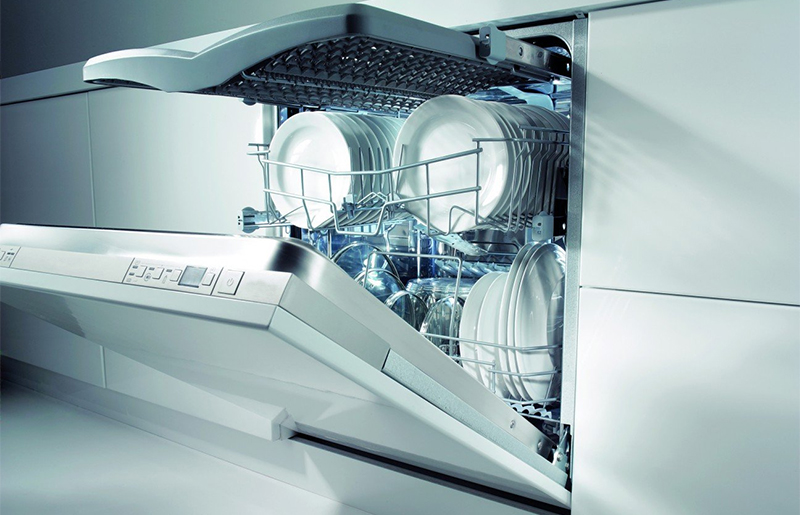
If you have long and painstakingly developed the design of your kitchen, where every detail is thought out to the smallest detail, and household appliances can disrupt the harmony of the interior, choose a fully embedded PM.
Such a unit is mounted in a prepared niche of kitchen furniture under the worktop, and its door is “masked” by a decorative facade. Behind this panel, your assistant looks like a simple locker and does not stand out from the general furniture row. The control panel here is usually located on the upper edge of the door.
Pros:
- Does not disturb with its presence the design of the room;
- Working equipment does not attract the attention of children;
- A fully built machine usually works quieter.
Minuses:
- You can not move to another place due to the lack of housing;
- It is more expensive than other models of the same class.
Partially embedded
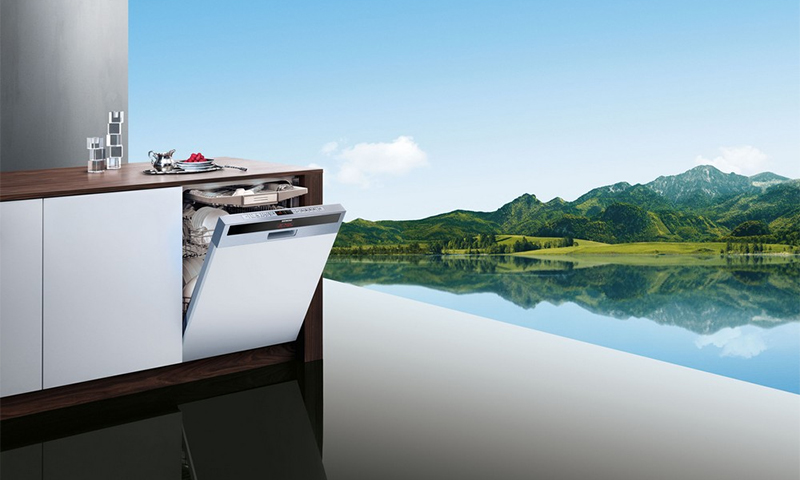
The difference of these machines is in the presence of its own body and a fully functional door. The control panel is usually located in the upper part of the case and often has a large informative display. Such a model is also installed in the headset niche, but no longer hidden behind a decorative facade.
Pros:
- Simplifies the process of turning on / off the device due to free access to the control panel;
- Some models already come with "their" table top;
- On average, cheaper than full-fledged units.
Minuses:
- Stand out against the background of the kitchen.
Freestanding
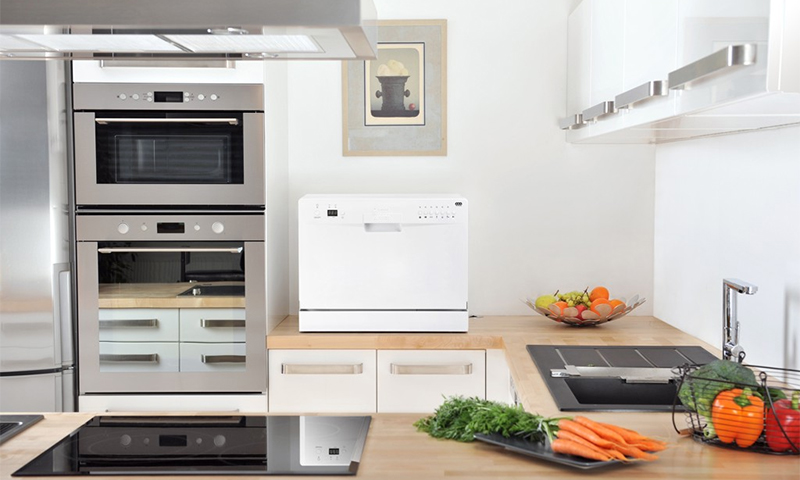
A dishwasher that is not built in is a separate appliance with already “improved” side and top panels. It can be placed anywhere in the kitchen where it is possible to connect to plumbing and sanitary, and, if necessary, move it. Some freestanding machines are so compact that they fit perfectly on a table or under the sink.
Pros:
- Large range of models with an attractive and diverse design;
- Wide selection of sizes;
- Transportability - at least they can be moved around the kitchen by disconnecting from communications;
- Approximately 20% cheaper than embedded analogs.
Minuses:
- It can be difficult to fit into the finished interior;
- Noisy at work.
Dishwasher selection options
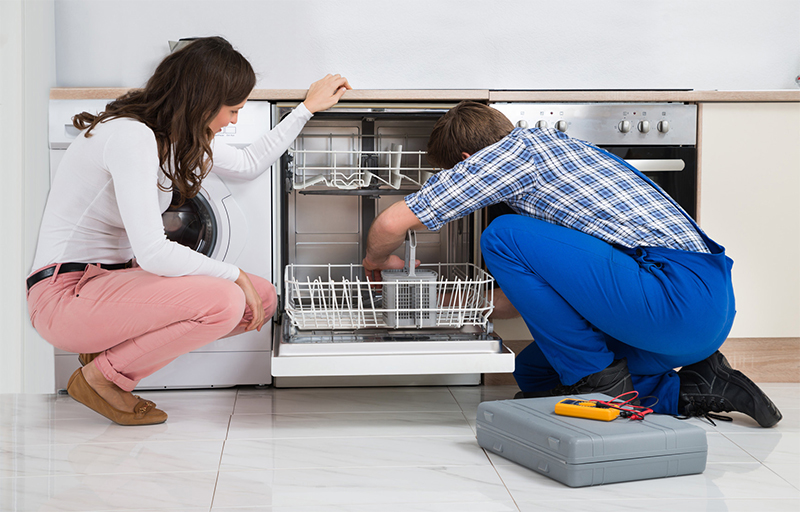
To choose the dishwasher that suits your needs, it is not enough to decide on the type of machine. Built-in, as well as a stand-alone unit equally well cope with washing dishes. It is more important to choose the right size of the device, the main characteristics of the device and functionality.
Dimensions
Not only the area that it occupies in your kitchen, but also the number of sets of dishes that fit into the unit at a time depends on the size of the selected equipment. For reference: the set of manufacturers of PM means 11 dining items for 1 person (plates, mug, glass, spoons and forks).
The dimensions of the dishwasher are conventionally divided into 3 types:
1. The full-size ones correspond to the standard cabinet of the kitchen unit (60x60x80-85 cm) and can hold up to 17 sets of dishes, including cauldrons and trays.As a rule, large dishwashers have several baskets for dining utensils, the height of which can be adjusted.
2. Narrow at the same height and depth are only 45 cm wide and can hold up to 13 sets (depending on the model).
3. Compact dishwashers are usually represented by desktop units and can have a variety of dimensions, although the most common is 45x55x45 cm. Such babies cope with a maximum of 7 sets of utensils.
Experts advise taking a car “with a reserve” of capacity, since even an average family of 3-4 people can accumulate up to 12 sets of dirty dishes per day. If you are ready to start the car wash several times a day, the unit for 8-10 sets will be enough.
Energy class
Dishwashers, like any other household appliances, are assigned energy consumption classes, which are denoted by Latin letters from C (the lowest) to A +++, that is, the most economical. Naturally, the closer the device is to the cherished letter “A”, the less it will eat electricity, and at the same time water.
However, one should not chase the extra pluses in the labeling - such a PM will be much more expensive than just a good car, and you will overpay more in the store than you will later save on electricity. In addition, energy consumption largely depends on the duration of the wash cycle, the method of connecting the equipment to the water supply system and the drying system implemented.
Drying type
As we already said, the power consumption of the machine depends on the method of drying. And also - the time after which you can get clean and completely dry dishes from the chamber.
In modern units, there are three different methods of drying plates and glasses:
1. Condensation - the most common and economical. When rinsing, the machine simply dips the dishes with hot water, which then evaporates from its surface and deposits on the walls of the chamber (condenses). Electricity is not spent, but the natural process takes a lot of time, and stains on glasses can remain.
2. Convection (turbosushka) - here it moves faster, because the dishes are blown by the fan, which drives heated air through the chamber. Naturally, the cost of electricity increases, but the drying time is significantly reduced.
3. Intensive - a relatively new technology based on the old as the world laws of physics. Cold water is passed through special channels in the hull walls. It cools them and causes the steam coming from the dishes to collect on the surface of the chamber (as in condensation models). To speed up this process, air ducts are located next to the built-in heat exchanger, creating a pressure difference inside the tank.
Manufacturers continue to experiment with drying technologies, suggesting the use of self-heating minerals and a variety of sensors. But so far they have not received wide distribution, so we will not consider them in detail.
Functional
The number of PM programs varies depending on the model and can provide from 4 to 20 modes. But in everyday life, the housewives often have enough of a minimum set of functions (the name may be different, but the essence is about the same):
1. Standard - the usual mode of daily washing at +50 .. + 60 ° C.
2. Pre-rinse or Soak - suitable for washing heavily soiled dishes and processing plates that you sent to the storage chamber until the evening.
3. Express Wash or Economy Mode - a short cycle of washing lightly soiled dishes.
4. Intensive mode - designed for very dirty utensils, braziers and trays. Usually accompanied by soaking and additional washing cycles with hot water of about +75 ° C.
Some expensive cars provide the ability to independently set the water temperature and the duration of washing, to supplement the program with soaking or another rinsing - at its discretion.
Alas, universal modes, which are enough for daily use, are not suitable for washing crystal, brittle porcelain or plastic.
For the "non-standard" dishes need other modes:
1. Delicate wash;
2. Steam treatment;
3. Wash plastic utensils.
It is very good if the machine has the program “Half load” - in this case you will not have to wait for the chamber to be filled with the necessary number of dirty plates, and at the same time you will be able to reduce the consumption of water and detergents for one cycle. In a large dishwasher, the so-called “Mixed mode” does not hurt, when you can set different conditions for the upper and lower compartments.
Additional programs make the dishwasher more versatile, but also increase its cost. Soberly estimate the number of modes you need and do not chase the redundant functionality that you will not use.
However, modern dishwashers have a number of really useful options - you shouldn’t just refuse them:
1. Connecting to hot water - will reduce the cost of electricity to those who have a boiler or centralized hot water supply.
2. Delay start - to set a convenient time to start washing.
3. Akvastop - effective protection against leakage. In case of any problems, the water supply to the tank will be stopped.
4. Children's castle - will protect an excessively inquisitive baby, favorite set and nerves of parents.
What dishwasher to choose
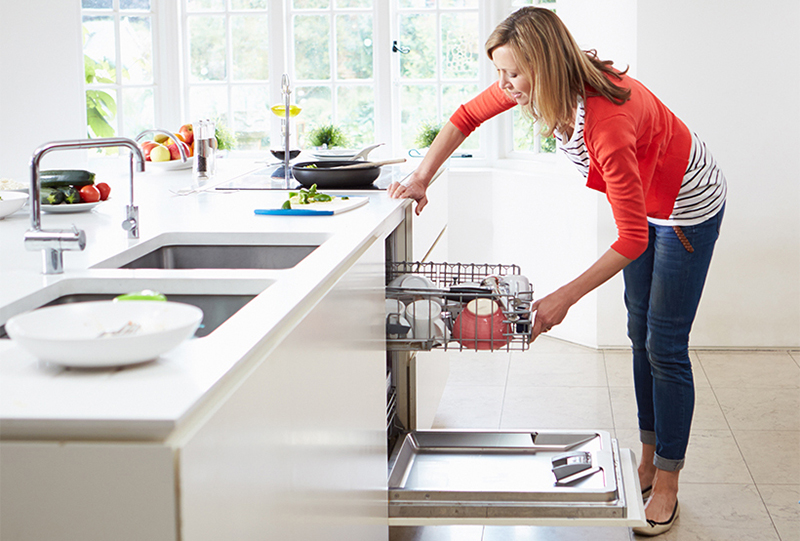
1. For a small family of 2 people, as well as bachelors, a compact table-mounted dishwasher with a capacity of up to 6-7 sets with a standard set of functions is enough. If the kitchen has enough free space, you can choose a full-size embedded or partially embedded appliances for 8-10 sets, but with the obligatory half load option.
2. For a family of 3-4 people need a dishwasher for 10-12 sets with advanced functionality. The number of required programs will determine the hostess. If there are (or planned) small children in the house, it is better to immediately take a fully embedded model with a child lock.
3. Numerous families and lovers of guests can not do without an automatic assistant, which accommodates 11-17 sets of dishes. Programs - the more, the better, but again without fanaticism. The main thing is that there was a mode of express washing and turbo dryer.
How much does a dishwasher

1. A fully built-in dishwasher with a width of 45 cm costs between 15,000 and 50,000 rubles.
2. The unit of standard width of 60 cm will cost on average more expensive - from 16 to 140 thousand rubles (depending on the number of functions implemented).
3. Partly embedded narrow PM can be purchased at a price of 27-110 thousand rubles. A full size of the same type will pull in the amount of from 13,000 to 147,000 rubles.
4. A freestanding floor model will empty your family budget by about 14,000-122,000 rubles.
5. For a compact desktop machine will have to pay about 12-50 thousand.
It will be interesting to friends too


